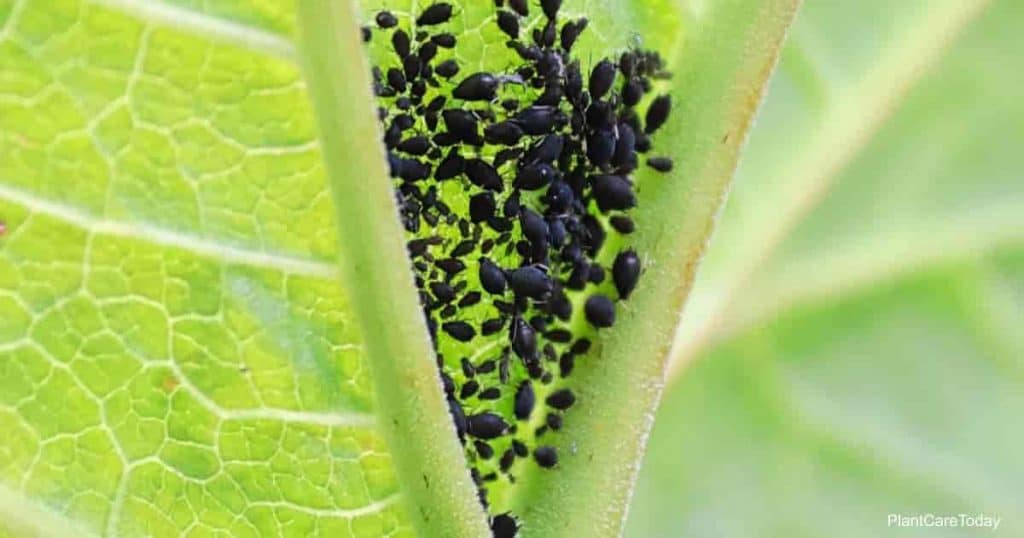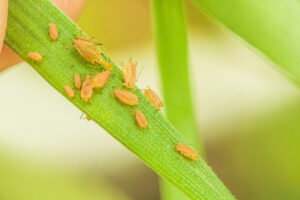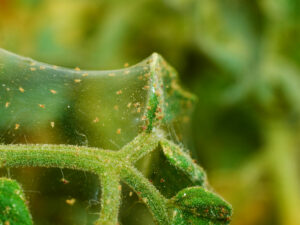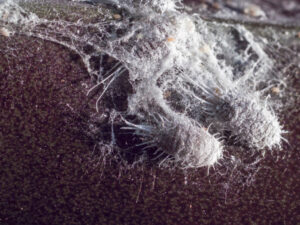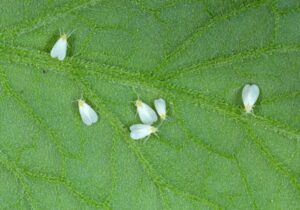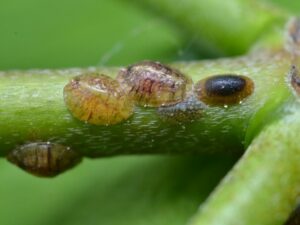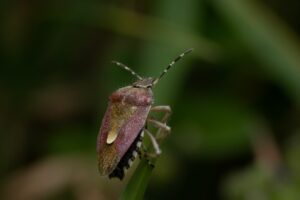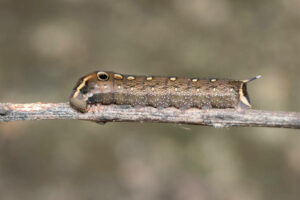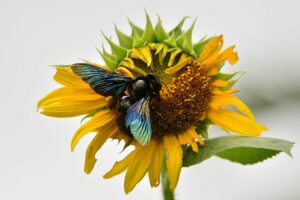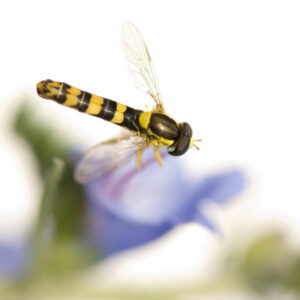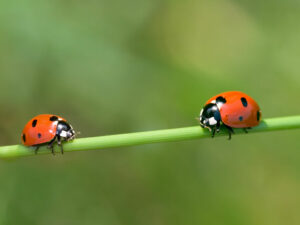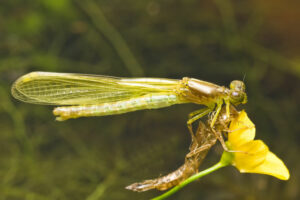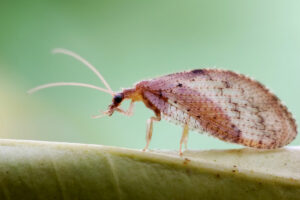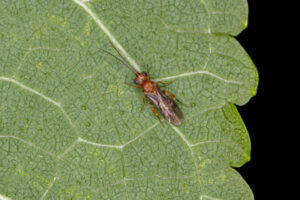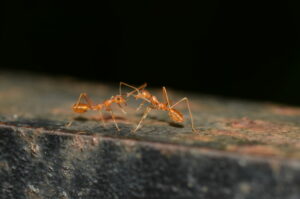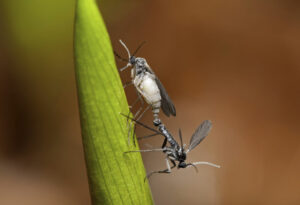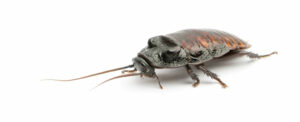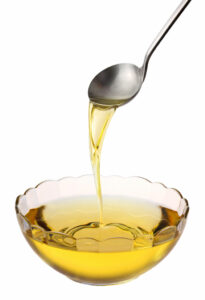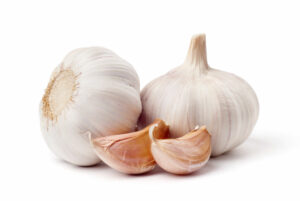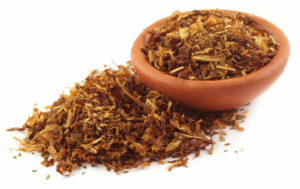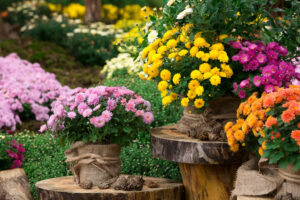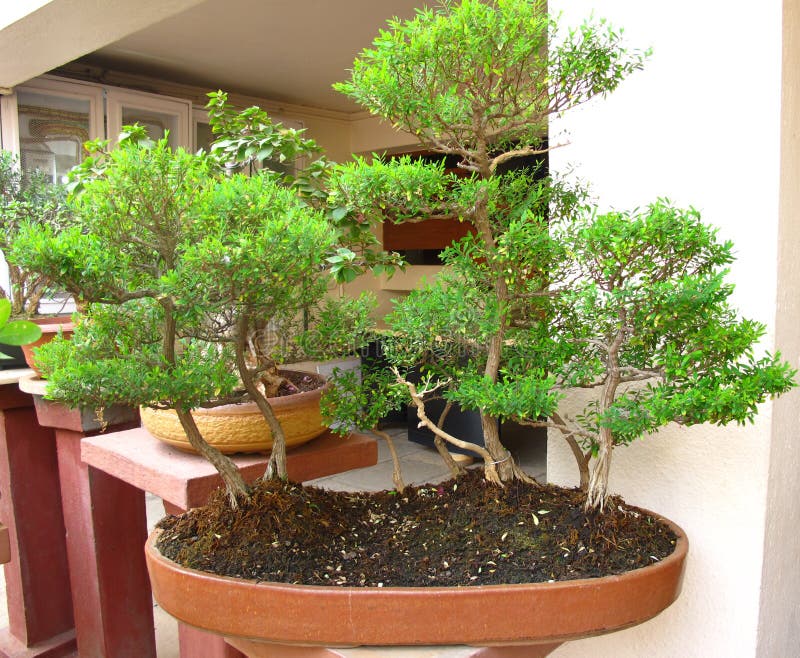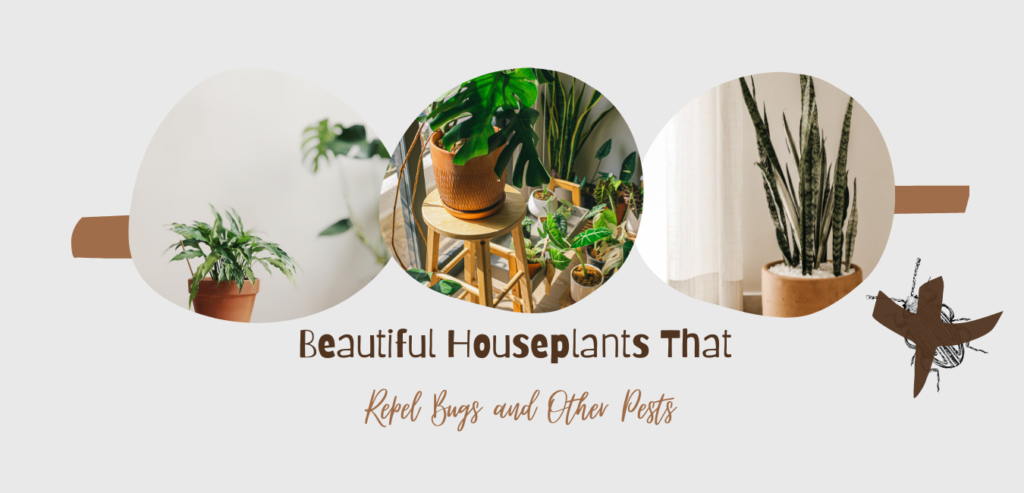HousePlantJoy is supported by our audience. When you purchase through one of our links, we may earn a small affiliate commission. As an Amazon Associate I earn from qualifying purchases. Your cost is not affected.
==================
Bugs on Houseplants Home Remedies
A lot of people love having houseplants in their house or even office. Who wouldn’t? Especially the houseplants. Houseplants reduce our stress and fatigue and boost our moods. Even serves as an air purifier and eliminates air pollutants. Helping the skin and respiratory ailments. How about the bugs and pests? Know something about bugs on houseplants’ home remedies? If none, you’re reading the right article.
Yet, having plant pest infestations are every plant lover’s nightmare. Seeing their plants eaten or ruined by these unwelcome bugs and pests is upsetting. But, don’t worry because there are different ways of solutions to get rid of them.
Houseplant Pests Identification
Knowing your enemies first before attacking them is essential, as people said. But before you look for home remedies that will help rid bugs, you must first learn the different types of bugs on plants. The list of pests to your houseplant is not all bad for your plants. Some are helpful, so it is necessary to identify these bugs.
What Are The Most Common Bugs On Houseplants?
Nasty bugs are every plant owner’s enemy. They destroy the plants by eating the leaves and stems and sapping them for their nutrients. Because of this destruction they make, it destroys and kills the plants. And in the long run, it will also affect the surrounding plants. Here are some of the most destructive bugs:
-
Aphids
Aphids are tiny with pear-shaped critters. Have a long antenna and two tubes projecting rearward from their abdomen. These insects are the most common plant pest you can see in your garden. And attacks different plants, usually on fruits, vegetables, ornamentals, and shade trees. It has high reproduction rates that multiply its population. Aphids plant pests suck the plants’ sap and cause damage to foliage and the dropping of leaves. And will it will kill the plants.
-
Caterpillars
Caterpillars are the larvae of butterflies and moths. Usually, they are soft, segmented with different, more rigid head capsules, and have six legs. But these insects are usually on fruits, vegetables, ornamentals, and shade trees. It damages the plants by chewing the leaves, flowers, shoots, fruits, and other plant parts. Because of their features, they can hide in rolled leaves or foliage that can be difficult to find. It is one of the common bugs in plants.
-
Spider Mites
Spider mites are a family of spiders and other arachnids, but spider mites are plant insects. They have three body segments, while arachnids have two body parts. A group of spider mites attacks the leaves, feeding off the plants’ components. But then, it will result from wilting and turning yellow or brown leaves, then will fall off. And usually, the houseplant will end up dying.
-
Mealybugs
Another bug on houseplants is the mealybug that can lay up to 500 eggs. You will often find their eggs on the plants’ leaves or main stem. They reduce the plant vigor through suck sapping the plant. Mealy plant bugs release sticky honeydew and wax, reducing the quality of the plant and fruit. It is hazardous for the plants, especially if a black sooty mold grows on the honeydew.
-
Whiteflies
While this next bug is the white bugs on plants that are easily recognizable when they have already attacked the plant. But this bug has two ways how to damage and kill the plants. First is the “direct damage.” Usually, they suck the juices of leaves that will cause wilting and turn to yellow leaves or drop. Another way is “indirect damage.” The white bugs plant adults do it. They can transfer the sooty mold from the dead leaf to another plant. And too much of these will make the leaves black and dirty. If this happens, they will not reach by sunlight. Another bug on a houseplant that we must be aware of.
-
Scales
Scales are a bug on houseplants that are rare to see. Usually can be color brown, white, tan, or orange. It is usually on fruits, indoor plants, ornamental shrubs, and trees. The types of bugs on plants that suck the sap cause the weakening of plants. Plants will wilt, yellowing leaves, brown pockmarks, and cause leaves to fall off, and the plant may die. It also excretes honeydew onto foliage and fruit.
-
Stink bugs
Stink plant bugs are harmful both to the garden and home but this plant targets ornamental, vegetable, and fruit plants. Usually, this has a triangular body and grows from 12mm to 17mm. Stink plant bugs’ adults are greenish-brown, while their nymphs are yellow with red eyes. But this bug inserts its needle-like mouthparts into stems, leaves, or seed pods in order to feed. Injecting material into the plant and removing and sucking the sap causes tiny holes in plants. Afterward, there will be yellow or green markings that will remain on the surroundings of the holes.
-
Cutworms
The moths of cutworms do not harm the plants. But their larvae are frustrating plant pests in the garden. They hide during the day and until nighttime to attack the plants. Their body colors can be gray, black, green, brown, or pink. It can be solid or patterned. Usually, they are smaller than 2 inches. Cutworms feed themselves through the leaves and stems of plants. These plant pest hiding spots are under leaves or in the soil, making them difficult to spot or find.
Beneficial Insects for Houseplants
Most people think that all bugs in houseplants are harmful to their plants. When in fact, most of these bugs are beneficial and harmless to your plants and people. They help to reduce the bugs by eating these harmful bugs, but what could be these beneficial insects for houseplants? These have three main categories, and these are:
-
Pollinators
Some of the houseplants are self-pollinating. Some depend on wind and water, and insects or bugs pollinate some. They carry the pollen from the stamen or the male part of the flower to the other flower’s stigma or the female part. Pollinator plants fertilize through pollination and produce seeds, fruits, and even young plants. But what are the bugs beneficial for houseplants? These are examples of pollinating bugs.
Bumble bees
They call the way of pollinating bumble bees “buzz pollination.” Bumble bees have rapid vibrating motions that allow them to carry many pollens. It can pollinate a flower in a single visit and are active on cloudy, foggy, and rainy days. Bumble bees are also safe from humans because they are non-swarming and less aggressive.
Hoverflies
Hoverflies are popular as prolific pollinators. It can travel hundreds of kilometers daily and even carry pollens above the open water. Their pollinating is incidental, but hoverflies play a unique role. They can visit 72% of food crops globally and 70% of pollinating plants that need animals and insects. Pollination between plants and hoverflies happens when hairy skin touches the flower’s stigma.
-
Predators
Some bugs and insects seek to hunt their prey to eat and kill them. Thus, they protect the garden or the houseplants against these harmful bugs. And here are some of the examples:
Ladybugs
Ladybugs are usually found in children’s and bedtime stories because of their beauty. Others think it is a harmless insect but these bugs are predators that help the plants. They enjoy eating aphids, mites, and scales. It has proved that they can eat up to 40 aphids per hour.
Damsel Bugs
Like the ladybugs, damsel bugs go to gardens to look for prey. They use their raptorial front legs to catch the harmful bugs. And use their piercing-sucking mouthparts to insert the digestive enzymes into their target. Damsel bugs usually eat soft-bodied insects like aphids, tiny caterpillars, plant bugs, and moth eggs.
-
Parasites
Parasites are like predators but have different ways of attacking harmful bugs. It will lay its eggs on the destructive bugs, and once its eggs hatch, the larvae feed on the host bugs. Here are some of the examples:
Lacewings
Lacewings insects are both pollinators and predators, and they parasite their prey. Usually, they are general predators, which means they are not picky eaters. But their common targets are caterpillars, aphids, mites, whiteflies, and leafhoppers.
Braconid Wasps
They are exceptional exterminators. The adult braconid wasps lay their eggs inside or on their host insects that will weaken or kill them. A female braconid wasp can produce up to 200 eggs a day during the summer.
Pests In Soil Of Houseplants
Aside from the pests that we can find on different parts of plants, we can find some pests on the soil and roots. Yes! Some of them are destructive too. But if you’re trying to figure out what these are, then these are some examples of dangerous soil bugs in houseplants:
Ants
Ants plant pests insects are easy to recognize and the most common pests. It can harm both plants and humans. Aside from they can bite us, it causes problems in the garden and plants. Usually, ants are fond of the sweet sap of their host. A group of them will chew on the plants’ stems or trunk and be capable of killing that plant. Then from that, they cultivate and will protect other dangerous garden pests.
Fungus gnats
Seeing these plant insects are dangerous when they infest the soil or potting mix of the houseplants. Adult fungus gnats don’t damage the plants or harm people. But their presence is a nuisance. And they even stunt plant growth, particularly in seedlings and young plants.
Wingless Cockroaches
Wingless cockroach soil pests’ house plants are nocturnal. It hides in the trash, soil, or under the leaves during the daytime. But they only feed themselves during the nighttime. It attacks the seedlings of all field crops.
Reasons For Having Bugs In Houseplants
Opening your doors and windows can be a reason for infestation. Some plant pests can enter your house and infest nearby plants. Not getting enough fresh air for your houseplants result in plant pest invading. Causing a favorable environment for these pesky bugs and insects. But some of them love dry climates and areas with less humidity. Preferring those less stressed plants. There might not be enough light, water, and fertilizer in the area, which will result in welcoming plant pests. And the most common reason is that there are no predators of these pests inside the house.
Another reason can be because of the contamination. The soil or potting mix from your garden that is already pest-infested before can be a cause. And there may be eggs left on the soil since some are not visible enough. New plants from stores and groceries can bring plant pests inside your house too. So you better check them before entering with unwelcome guests for you to avoid these bugs on houseplants
Getting Rid of Bugs on Houseplants
As plant owners, it is normal to encounter plant pest infestations on the plants. Even though you take care of them in a proper way, some bugs will attack them because they can sense the plants. Thus, trying bugs’ home remedies or organic pesticides can also be a solution to get rid of them. Yet, it would help if you distinguished the remedies used on plants and their soil.
How to Prevent Bugs from Houseplants?
The use of products and remedies for bug prevention is not necessary. Plants need proper care and maintenance from the owner. But if it is already out of your control, then it is time to use the bugs spray and bugs on houseplants’ home remedies.
Bug spray for indoor plants
One of the common ways of plant pest control is using pesticides or bug spray. Indoor plant pest control protects both plants and trees. It eliminates hazardous plant pests through its chemical components and growth regulators. Pest control kills pests and hindrance the reproduction and development of plant pests. There are two ways in which they use pesticides.
First are the insecticidal solutions. You can use it for drenching the plant’s soil. It is very effective against soil fungus gnats, aphids, and mealybugs. The second is the spray that you apply to the plant itself. Using this spray away from the children and pets would be best. And better to isolate the plants so they will not contaminate harm or cause conflicts.
But wait! This kind of plant pest control must not be the first option to get rid of these pests. We should do it in natural and organic ways; I will mention it below.
7 Types Of Bug Spray For Houseplants
It is not necessary to use commercial sprays for the houseplants. It will help if we use homemade bug spray for houseplants. It is cheaper and safer for the plants. But be cautious when using these ingredients found in your home. These are the types of bug spray for indoor plants you can use for your houseplants:
-
Vegetable oil
Vegetable oil spray has a devastating effect on pests. Mix one cup of vegetable oil with one tablespoon of liquid soap to make this bug spray for indoor plants.
-
Soap spray
Soap spray can also be an alternative to oil spray. It controls mites, aphids, whiteflies, beetles, and other hungry little insects. To make a soap spray home remedy, mix one-half teaspoons of mild liquid soap with one quart of water. You can now spray the mixture on the infected surfaces of the plants.
-
Garlic
Garlic is very popular because of its strong aroma. It makes our food delicious and, at the same time, can be an insect repellant. Garlic spray can knock down the pests in your plants. In making garlic spray, puree two bulbs of garlic in a blender or grinder with a small amount of water. Let the mixture in a container overnight, then strain into a quart jar. Add 1/2 cup of vegetable oil, but this is optional, one teaspoon of mild liquid soap, and enough water to fill the jar.
-
Chile Pepper Spray
Another excellent bug spray for indoor houseplants is the Chile pepper spray. It is similar to garlic spray. You can use fresh hot peppers or chile pepper powder. To make a chile pepper spray, mix one tablespoon of chile powder with one quart of water and a few drops of liquid soap. You can spray this mixture on the affected plants.
-
Salt spray
Salt spray is one of the indoor houseplants’ most effortless and natural home remedy bug sprays. It does not only help to deter pests. It also increases nutrition absorption like magnesium. It allows plants with their vital nutrients like phosphorus and sulfur.
-
Tobacco
Tobacco can kill many plant pests. Boil it in one cup of tobacco leaves or five butts of cigarettes in five liters of water. But avoid breathing the steam or smelling it while boiling. Filter it and add a small amount of liquid soap, and now ready to spray. Do not use this mixture on potatoes, tomatoes, peppers, and eggplant. It might damage these plants and will not kill the pests on them. Take note also that tobacco juice is a poison, and avoid getting the juice on clothes and skin.
-
Chrysanthemum flowers
The flowers of chrysanthemum have a powerful plant chemical compound, the pyrethrum. This chemical compound can damage the nervous system of insects and pests. To make a chrysanthemum flower tea, boil some dried flowers in a pot full of water for 20 minutes. Strain it and let it cool before putting it into your spray bottle. Adding some neem oil is advisable to make it more effective. And you can store this mixture for up to two months.
How To Get Rid Of Bugs Organically?
Choosing and sticking with the organic and natural ways of pest control is the best option. It is for the safety of everyone. Chemical solutions containing toxic materials or ingredients might harm the pests. Still, they will also danger the surroundings, especially kids and pets. And these chemicals might cause more problems than they solve, like plant poisoning.
These are just some of the home remedies that every plant’s owner can try as organic pesticides:
- Mix one cup of urine with ten cups of water. Let it sit inside a closed container for ten days. After ten days, you can use this mixture on your plants to kill the pests.
- A mixture of hydrogen peroxide and water is effective for getting rid of bugs in houseplants. You can find it in first aid kits since it is useful for minor cuts and scrapes. But it is also helpful for the gardeners. Aside from getting rid of bugs, it also helps grow the roots.
- Extracted oil from the seeds of the neem tree is an excellent natural insecticide. It can interfere with insects’ life cycle and reproduction, and it can be adult, larvae, or egg. The good thing about this is it is biodegradable and non-toxic to animals. But it is effective against a variety of pests.
- Eucalyptus oil can deter insects and bugs because of its strong smell. Spray some of it on your plants and use it always for better results.
What Are Other Effective Way To Get Rid Of Bugs On Plants?
The most effective way of preventing the infestation of harmful pests is to take care of our plants. All plants need water, soil, fertilizer, and sunlight. But each plant needs different amounts of them. So, studying the plants you want to have or get for your garden or indoor plants is better. It would be best if you researched the quantities of the components they need. It is also advisable to use organic fertilizers. Keeping the soil healthy is essential to invite beneficial bugs. You can use organic materials like manure or compost to supply essential nutrients. Some pesticides don’t contain chemical ingredients and are already available on the market.
Natural way of getting rid of bugs on plants
If there are plant bugs or plant pests that you can see in your garden or home, it is essential to identify them first. Specify what they are; it will be easy to research how you will get rid of them. When a particular plant starts to experience an infestation, isolate it. Try to determine the extent of the infestation. You must repot the infested plant and ensure no pests are still alive.
Examining your plants is essential. There are times that you must let beneficial pests. Still, you also need to use home plant pesticides or other pest control methods. After identifying the pest, it is time to use the physical pest control method.
Crop rotation is also effective in avoiding pests. Plant a variety of crops and change the pattern after harvesting or repotting. The pests hiding underground will come out.
Using barriers around the plants or garden can help. Having it covered with a fine net around the plant leaves enough space for the plant to grow. Or you can also try companion planting. Some plants have natural insect repellant in their components. But you can try planting them near plants that are attractive to the harmful bugs. For example, you can grow garlic beside the vegetables. It will scare the Japanese beetles, aphids, and spider mites.
Conclusion
In conclusion, not all bugs on houseplants are harmful to your plants. Some are beneficial, while some are destructive. You must distinguish them, so we know who we end and who are welcome to our garden. Then look for organic and natural ways to stop the infestation of harmful plant bugs. And also a reminder that there are bugs on houseplants home remedies you can try so that it will be convenient for you.
With every tip mentioned above, I hope you will no longer worry about the pests in your houseplants. You are now introduced to different beneficial and harmful insects. You can now distinguish them. Like us, our plants also need attention and extra care to grow healthier. Don’t pressure yourselves. Instead, you relax and enjoy while caring for your nature buddies.
Happy gardening!
I
Read More:
https://houseplantjoy-temp.siterubix.com/plants-for-the-house-and-patio-that-bugs-dont-like/
https://www.housebeautiful.com/lifestyle/gardening/g2628/low-light-houseplants/

